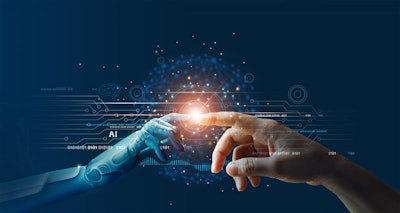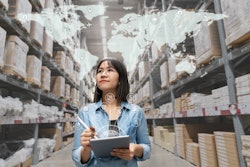
Artificial intelligence (AI) has widely been covered as of late, especially as the pandemic has prompted many companies to accelerate digital transformation efforts. As MIT Media Labs’ Dr. Kate Darling recently mentioned, while some conversations seem to focus on automation “taking” the jobs of humans, some are forgetting the power of collaboration between human and machine.
In an industrial setting, for example, the more pioneering manufacturing plants rethink processes to make more efficient use of humans and robots together in just the last 5-10 years alone. The possibility of implementing AI into our daily lives has increased exponentially. We are also seeing new and interesting AI-enabled operating systems become available, but to understand how successful it can be, we will need to keep coming back to the premise that AI needs to work alongside humans.
As we start to envision the world of collaborative robots, or cobots, for example, with robots and humans working in closer partnership on the factory floor, there will need to be more openness and transparency at the heart of mission critical electronics than the aforementioned "proprietary AI” allows for. This is imperative as roles and responsibilities change and robotics become more heavily involved in accomplishing tasks humans may have solely been responsible for.
For instance, AI is being deployed for some “normal” tasks. The pace in this specific industry means that the rollout is somewhat slower than in other markets like consumer and automotive. In the world of urban mobility, the “eyes” of these craft must be computers -- there is simply too much data to process in too short a period to consider any other type of approach. The mission-critical electronics inside aircraft though will remain AI-free for some time. With human lives at stake and regulators wanting full access and transparency to the decision making of a system, these will remain controlled by humans for some time to come.
In a similar way, there is a difference between implementing and relying on AI in the workplace. We should not fully rely on AI to protect and ensure systems continue to work as necessary. While AI can process data, it cannot work alone and without supervision of a human. At least not yet. This is especially true in high intensity situations present in avionics and other industries when there are human lives at stake. We are also noticing the implementation of AI where it is supporting industries using robotics to support humans. There may be one day when an enterprise is made up of more robotics than humans, but that is not in the near future. Before we see a future without human collaboration, we must first see AI-enabled systems continue its roll out in a more controlled way, especially as models and datasets improve the point where they can be deployed.
Edge computing will have a big impact on the development of AI. Right now, AI training produces vast volumes of data that are almost exclusively implemented and stored in the cloud. Placing compute at the edge creates a change to process and looks for patterns locally. I believe this can evolve the training models to become simpler and more effective. Car manufacturers are also improving their quality control processes through inference at the edge because they can catch any defects in real-time before the product is put into commercialization.
In the first phase of deployments, “edge computing” has often been a standard server blade being deployed at a facility. This will evolve to optimized-for-purpose hardware, deployed in the units such as robots. Typically, the heart of these systems will utilize very powerful processors running a number of different workloads concurrently. Think of the traditional highly virtualized computing environment of the cloud coming to hardware that fits inside the palm of your hand which ensures applications are isolated from each other, ensures one application cannot impact another and that those functions that simply must always operate in a responsive, deterministic way, always do so.
AI functionality has an amazing opportunity to change the way systems behave and are controlled. Another trend stemming from AI is system anomaly detection. As the algorithms build up an understanding of the regular habits of a platform, AI will be able to flag errant system behavior. Not a month goes by without a notification of a significant hack and often, the malware code infiltrates the system, often for weeks and months, without being noticed. This is important as hackers will often need quite a bit of time to identify and subsequently access precious resources in the system and on the network. The sooner the attack is recognized (ideally day zero), the lower the chance of valuable information being compromised.
Humans can’t do it all – AI can help fill in the gaps.


















![Pros To Know 2026 [color]](https://img.sdcexec.com/mindful/acbm/workspaces/default/uploads/2025/08/prostoknow-2026-color.mduFvhpgMk.png?ar=16%3A9&auto=format%2Ccompress&bg=fff&fill-color=fff&fit=fill&h=135&q=70&w=240)

